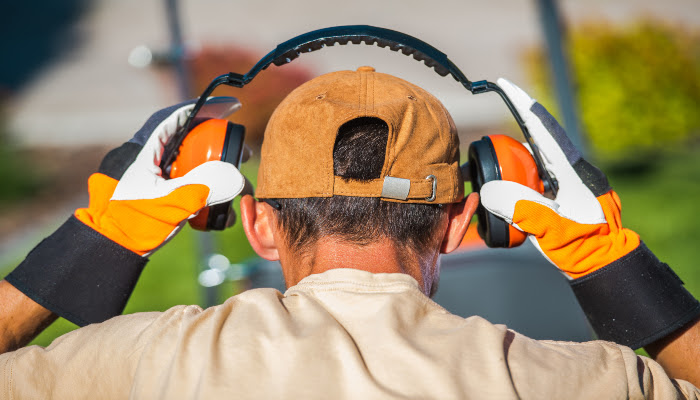Your ear can be damaged by long-term exposure to high-impact noises, and regular exposure to sounds above 85 decibels (dBA) can cause gradual hearing loss.
According to the Center for Disease Control (CDC), an estimated 22 million workers are exposed to potentially damaging noise at work each year, making noise one of the most common physical hazards in the workplace. Interestingly, most people think those loud work environments are limited to construction sites or the industrial sector because of the noisy machinery and equipment. However, workplaces such as loud restaurants, musical venues, and recreation centers can also expose workers to high sound levels.
Because consistent exposure to loud noises can lead to ear damage and permanent hearing loss, OSHA requires employers to implement a hearing conservation program when noise exposure is at or above 85 decibels. The program aims to prevent occupational hearing loss and equip workers with the knowledge to safeguard themselves.
How can I reduce noise hazards?
Experts have identified 85 dBA and above as a hazardous noise level. An excellent way to determine if the noise levels are at 85 dBA or more is to follow the 2-3 foot rule. If you have a co-worker standing 2-3 feet away from you and have to raise your voice to be heard, your work environment is most likely exposing you to noise levels that are 85 dBA or above.
Here are some control types to help reduce noise hazards in your workplace:
- Administrative Controls - Management can help workers minimize their exposure to noise hazards by having workers distance themselves from noise sources or implement exposure control plans. Admin may also have workers work in different shifts so that exposure isn’t consistent and long-term.
- Elimination/Substitution - If the source of the noise comes from a different environment, the solution would be to move away and work at another worksite.
- Engineering Controls - Use equipment designed to minimize noise, such as isolation booths or noise barriers. Equipment can also be the source of noise when the moving parts are not well-maintained or lubricated.
- Personal Protective Equipment - Protect the ear and hearing by wearing hearing protection devices, such as earplugs, ear canal caps, or semi-inserts.
Minimizing Noise Hazards and Consequences with Regular Inspections
To prevent potentially permanent damages of continuous exposure to harmful noise levels,
- Have workers been informed of the hazardous effects noise has on hearing?
- Are workers aware of the signs and symptoms of hearing loss?
- Are workers encouraged to report any concerns regarding noise sources?
- Is equipment properly maintained and checked periodically for sound outputs?
- Have noise levels been adequately measured?
- Have workers been isolated from areas that have excessive noise?
- Is noisy equipment or machinery put in an enclosed room or separated from workers by enclosures or barriers?
- Can the equipment that is noisy be modified or retrofitted, so it generates less noise?
- Are there warning signs advising workers that they must wear hearing protection posted in the areas where noise is excessive and harmful?
- Has flexible scheduling been implemented to help limit workers’ exposure to excessive noise?
- Are tasks rotated to help reduce workers’ exposure to noisy operations?
- Has training been provided on the selection, proper use, and care of personal hearing protection?
- Have workers been provided with CSA-approved hearing protection?
With The Checker, you can ensure nothing is overlooked. All of our checklists are available as software or Checklist Books. Feel free to browse our checklist library to find the inspections you want.











